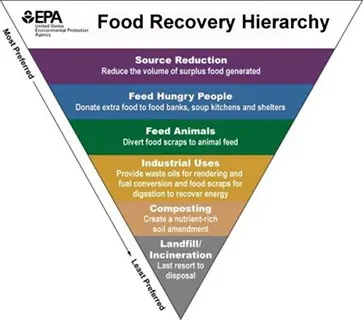

A third of the food raised or prepared does not make it from farm or factory to fork. Producing uneaten food squanders a whole host of resources—seeds, water, energy, land, fertilizer, hours of labor, and financial capital—generating greenhouse gases at every stage, including methane when organic matter lands in the global rubbish bin. The food we waste is responsible for roughly 8 percent of global emissions. Greg McCarron discusses how composting and anaerobic digestion turn organic waste into a beneficial product in Waste Management & Research, Volume 43, Issue 4.
The trend in the United States is towards using ASP systems to process food scrap materials. Recent examples by private companies involve the composting of food processing residuals. One company implemented a turned windrow compost project for sustainability reasons and to produce organic fertilizer to grow organic food products, which continue to grow in demand. Another company is pursuing an ASP compost project as land application regulations are changing, which are affecting America’s farms and farmers, and requiring enhanced organic management practices.
Anaerobic Digestion (AD) involves decomposing organic waste in an oxygen-deficient atmosphere, producing methane-rich biogas. Historically, AD has been used to process low solids/wet organic materials, such as manure, biosolids, and liquid industrial waste. To manage food waste, three types of AD facilities are increasingly being utilized in the United States: (1) stand-alone food waste digesters, (2) on-farm digesters that co-digest food waste and manure, and (3) digesters at water resource recovery facilities that co-digest food waste and biosolids.

Additional Composting Resources:
The Solid Waste Association of North America (SWANA) Applied Research Foundation released a report concluding that: a significant amount of additional food waste processing capacity will be required to achieve national, state, provincial, and local food waste diversion goals. The report also emphasizes the need for local decision-making in selecting and implementing those food waste diversion programs.
…a significant amount of additional food waste processing capacity will be required to achieve national, state, provincial, and local food waste diversion goals. The report also emphasizes the need for local decision-making in selecting and implementing those food waste diversion programs.
The report goes on to say that interest in recovering food waste from municipal solid waste is growing to meet goals established by the U.S. Environmental Protection Agency and U.S. Department of Agriculture, but many major metropolitan areas lack the infrastructure to manage the ability to meet the established goals. Two examples were cited:
Several states, including Massachusetts and Connecticut, condition their food waste diversion requirements on the ability of generators to access adequate capacity within a certain distance.
Speaking as SWANA’s Executive Director and CEO David Biderman stated:
We believe that Americans need to rethink how food is handled before it is considered waste, to divert it into programs to feed people, and to find other productive uses for food as food. Once it becomes waste, however, municipal decision-makers, working with their processing partners, need to determine how to best manage the material.

The SWANA report focuses on the effects of food recovery at the two lowest tiers of the hierarchy – composting and landfilling/incineration. The report concludes that food waste diverted from landfill operations has the potential to be processed at composting facilities. Then, going on to say that anaerobic digestion (AD) and co-digestion at wastewater treatment facilities are also likely destinations for diverted food waste.
Jeremy O’Brien, Director of the Applied Research Foundation, noted:
The food recovery hierarchy does not apply universally; an analysis of greenhouse gas impacts based on local data and conditions is needed to identify the best food scraps management options for a specific community.
The report encourages solid waste managers to perform a life cycle analysis of economic and environmental costs and benefits based on local needs, system capabilities, and data to identify the most effective ways to manage food waste at the local level.
SCS Engineers and SWANA are both long-time advocates for local decision-making in establishing programs to collect and manage municipal solid waste.
Related articles:
An introduction to anaerobic digestion technologies and processes. This presentation covers the operational, construction and permitting of facilities. What are the technical and financial considerations? Find out in this excellent guide by Tom Kraemer and Greg McCarron, SCS Engineers.
Click here to view the presentation.
Contact Greg McCarron the SCS National Expert in Organics Management or visit our website by clicking here.